For months, life in Hong Kong has been dominated by violent clashes between anti-government protesters and the police.
Usually peaceful streets have come to resemble battleground, with petrol bombs, tear gas and rubber bullets having all been been deployed during the course of the ever-escalating conflict.
Hundreds of thousands of people have taken to the city’s streets over the course of the protests, which began peacefully in June. Since then, demonstrations have become increasingly frequent and violent, with protesters storming parliament and shutting down Hong Kong’s airport.
But what are people in Hong Kong protesting about? What happened over the weekend – and how have authorities reacted? Here’s everything you need to know about the conflict.
What Is The Latest Update From Hong Kong?

On Monday, the city’s Polytechnic University became the epicentre of conflict between protesters and Hong Kong police as officers laid siege to the campus, where demonstrators – thought to be armed with petrol bombs – have barricaded themselves in recent days.
Amid fears of a bloody crackdown, officers have been firing rubber bullets and tear gas at demonstrators attempting to leave the uni – seemingly at odds with the words of a regional police chief who has urged protesters to exit the building peacefully.
It came after a night of chaos in Hong Kong, where roads were blocked, a bridge set on fire and a police officer shot with a bow and arrow.
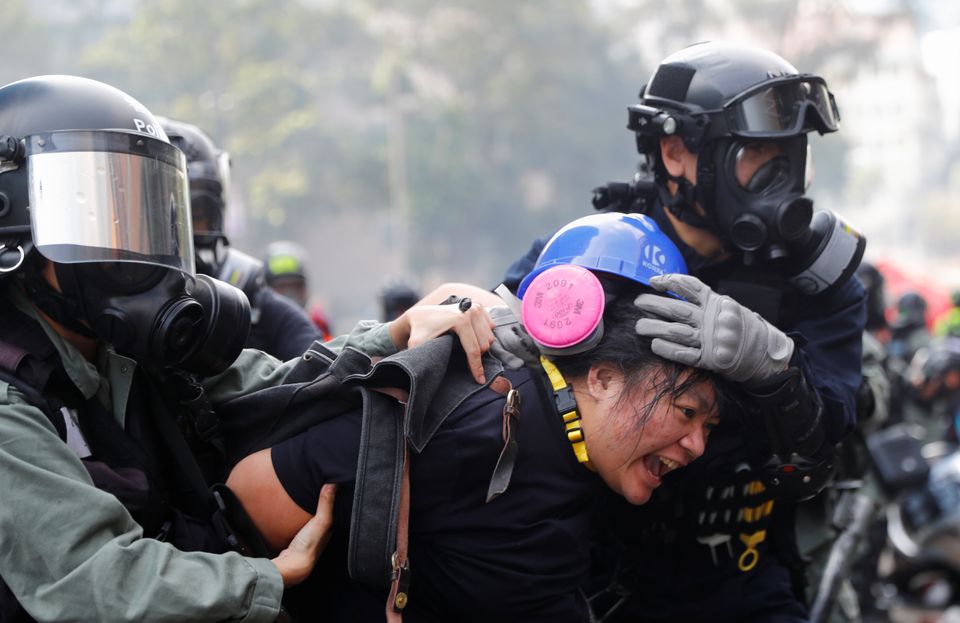
When protesters attempted to make a run for it – dodging tear gas canisters and sponge grenades while police pointed guns at them – some were arrested, while others were forced back inside.
Over the weekend, 154 people – some as young as 13 – were arrested. Meanwhile, hospital authorities said 38 people were wounded on Sunday night.
Reuters reported seeing protesters with burns caused by chemicals fired from police water cannons.
Why Are People In Hong Kong Demonstrating?
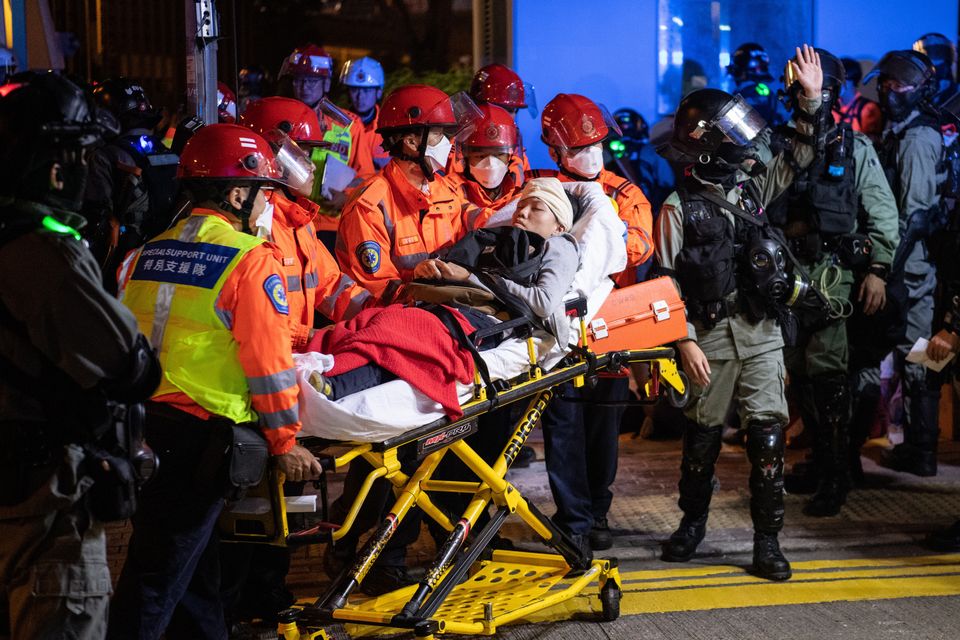
Demonstrations began this year after the government introduced legislation that would have allowed criminal suspects to be extradited to mainland China.
Until 1997, Hong Kong was a British colony. Since then, it has been part of China under a model known as “one country, two systems”. This agreement is supposed to enshrine authority and freedoms for Hong Kong and its citizens and is currently set to expire in 2047.
But people in the city said the extradition bill would undermine this independence – and leave criminal suspects at risk of facing torture or unfair trials in China. What followed was months of protests and the territory’s biggest political crisis in decades.
In September, Hong Kong’s leader Carrie Lam said her government would withdraw the bill – but the protests have since developed into broader anti-government demonstrations amid fears that the territory’s independence is being chipped away by China.
How Have Hong Kong Authorities Reacted To The Demonstrations?
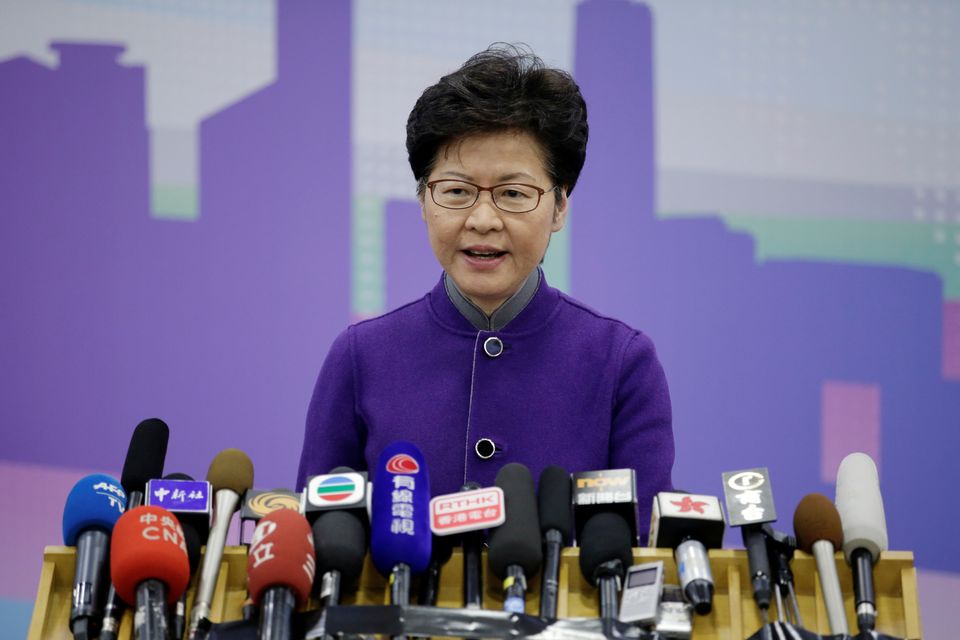
While Lam’s government officially pulled the extradition bill back in October, the city’s police have been accused of using excessive force against protesters – an allegation the force has strongly denied.
But at a press conference on Monday, Cheuk Hau-Yip – a regional commander for the Hong Kong police – warned protesters: “Don’t test our bottom line.”
“I would urge those rioters: do not try to escalate the level of weapons or violence,” he said of the demonstrators inside Polytechnic University. “We have the capabilities. I will once again urge them to come out, surrender.
“As if they always claimed they want to fight for a better future, then please come out and face the consequences of your actions and uphold the rule of law of Hong Kong.”
Meanwhile, he said the police force could use deadly weapons in the clashes. “I have one fellow officer shot by arrow already,” he said.
“This is a very long range weapon used by the rioters. If we have to respond, I believe the only option is to use deadly weapons.”
Meanwhile, last month the government attempted to impose a ban on protesters wearing masks during demonstrations – a rule since struck down by the city’s high court, which said it was unconstitutional.
What Role Has China Played?
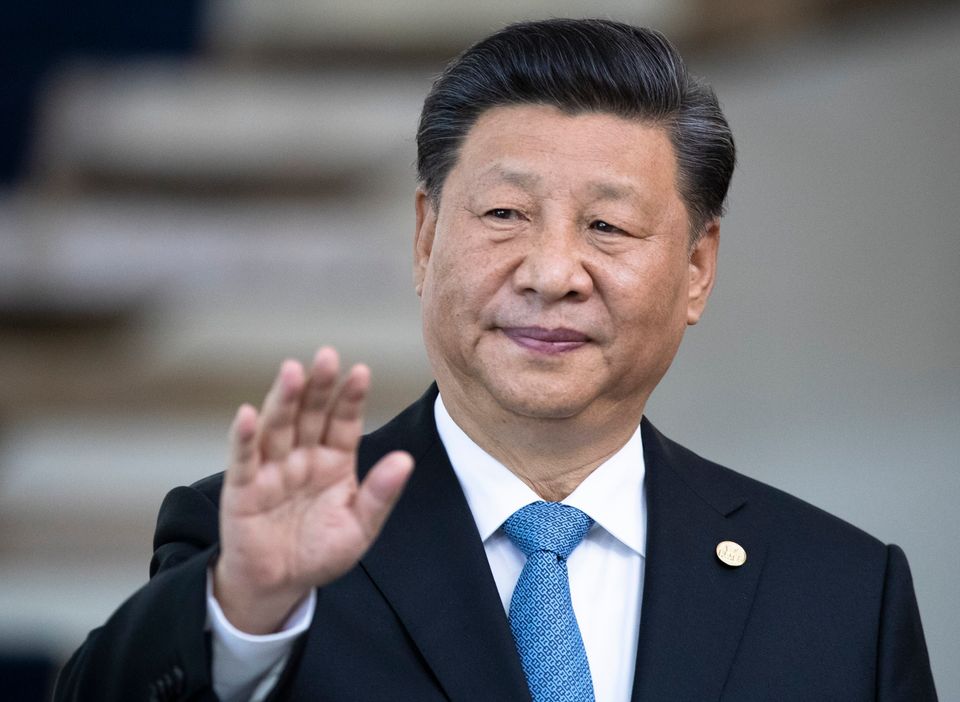
China has insisted it is committed to the “one country, two systems” structure that has been in place for the past 22 years.
But on Monday, the country’s foreign ministry suggested no one should underestimate its will to protect its sovereignty.
“If you are viewing the facts with an impartial view you can see that what is happening in Hong Kong is no longer a simple demonstration – it is a handful of violent criminals conducting violence against civilians,” ministry spokesman Geng Shuang said.
Meanwhile, Chinese soldiers at a base close to Polytechnic University were seen monitoring developments on campus with binoculars on Sunday, with some dressed in riot gear. Troops also emerged from their barracks on Saturday to help clean up debris on the streets.
It is thought to have been only the second time Chinese soldiers have appeared on Hong Kong’s streets since 1997, with troops having helped tackle debris following a typhoon in 2018.
The unrest poses the biggest popular challenge to Chinese President Xi Jinping since he came to power in 2012. Beijing denies interfering in Hong Kong’s affairs and has blamed Western countries for stirring up unrest.
What Has The UK Said?
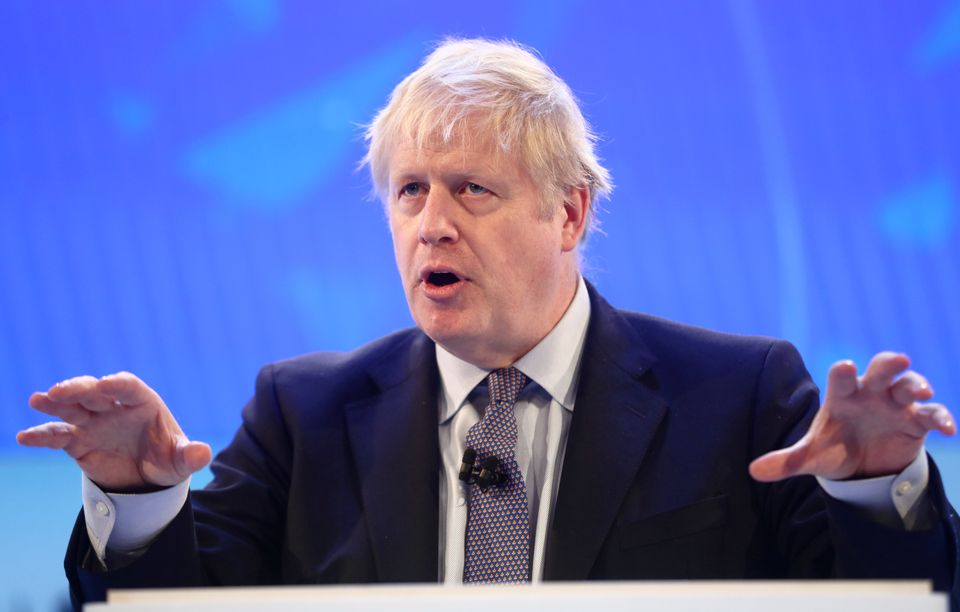
On Monday, Boris Johnson called for “calm and restraint” in Hong Kong, urging both sides to de-escalate the conflict.
“We remain seriously concerned by the situation in Hong Kong and the escalation of violence between protesters and police,” the prime minister said. “We continue to urge for calm and restraint on all sides and support the right to peaceful protest.”
The Foreign Office has also said those injured in the clash at the university must be able to receive “appropriate medical treatment”, also calling for “safe passage” to be made available “for all those who wish to leave the area”.
“The UK is seriously concerned by the escalation in violence from both the protestors and the authorities around Hong Kong university campuses,” a spokesperson said.

